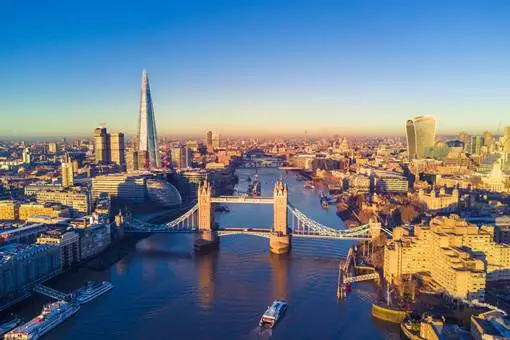The rise of UK solar farms
- 29th April 2015
- Sustainable Business

As solar farms continue to multiply in number across the UK, we consider the impact this will have in the future.
The UK is becoming increasingly fond of solar power, with solar farms springing up in all four corners of the country. Preliminary figures show that, in 2014, the UK installed the most new solar power capacity out of all European countries, with current figures illustrating that the country is on track to retain its title this year.
Estimates suggest the UK installed 2.5 GW of solar capacity last year. Meanwhile, the Solar Trades Association revealed that the new capacity installed in the first quarter of 2015 equals that of the whole of 2014.
There’s no doubt that solar power is becoming a big industry in the UK, and the government is beginning to realise that. Solar power could provide up to four per cent of the UK’s electricity by 2020, energy secretary Ed Davey told the BBC, adding that he expects further growth over the next decade.
However, the government’s decision to end most subsidies for large-scale solar could heavily impact the industry.
The solar boom
Solar power is the most popular form of energy, according to the latest public opinion tracker from the Department of Energy & Climate Change, and there are a number of benefits for installing it in the UK.
Most solar power is derived from the use of photovoltaic (PV) panels and it was the cost of these that once held the solar industry back. However, over the past six years the price of PV panels has reduced by 80 per cent, according to a Deutsche Bank report.
The price crash was driven by the uptake of mass market manufacturers, particularly from China, who were drawn in by a wave of subsidies from a number of countries.
As costs declined, the value of investing in the solar industry soared. The relatively low risk profile of PV panels has been a key driver behind the popularity among institutional investors and pension funds.
The case for solar in the UK
The popularity of solar certainly grew in recent years and has mostly been taken up by small and medium-sized enterprises (SMEs). It’s apparent that the solar industry not only produces benefits for the environment, but for the UK’s economy also.
Paul Barwell, chief executive officer of the Solar Trade Association, said: “Analysis has shown that solar is the most popular form of energy generation, and could provide 50,000 jobs by 2030 if given the right support.”
When asked about the UK’s climate for solar in comparison with much “sunnier” countries, Mr Barwell said: “Solar clearly works in the UK. Panels in London generate 65 per cent as much energy as in Madrid, and the panels work more efficiently in cooler temperatures.”
Solar farms will continue to be installed in the UK and analysts point towards Scotland as the next avenue for further growth. Scotland remains relatively untapped when it comes to solar energy generation, as most installations have been small scale domestic or communities.
"There is a huge opportunity for solar power that has yet to be captured in Scotland,” John Forster, of the Solar Trade Association Scotland, said to the Sunday Herald.
However, will the government’s move to cut subsidies stifle the rise of solar in the UK?
The future of solar
Despite the government’s subsidies, solar power uptake in the UK fails to match the installed capacity of Germany and Denmark - who enjoy similar levels of sunlight.
The ending of the renewable obligation certificates - the method of government subsidy - for large-scale solar projects has already slowed the pace of solar installations in the UK. Furthermore, the contracts for difference system is not geared towards SME solar projects, according to Hive Energy commercial director, Tim Purbick.
In addition, the UK has fallen to its lowest position in 12 years in EY’s renewable energy country attractiveness index, with cited reasons being the lack of clarity over the role renewables will play following the election.
However, the solar industry’s day has not yet ended. Analysts at Deutsche Bank predict that the cost of solar technology will continue to decline. Costs will fall by a further 40 per cent by 2017, according to a DB report, which will bring solar energy to the cusp of competitiveness when compared with producing electricity from fossil fuels.
The report also suggests solar power will become the dominant global electricity source by 2030, helped along by improvements in battery technology and cheaper electricity storage.
It seems that solar power will start competing with fossil fuels on a level playing field, perhaps even overtaking them in usage. The solar industry in the UK can only benefit from these conditions, while the low-risk profile of PVs will likely continue to attract investment from a number of sources.
Other News
Citi Microentrepreneurship Awards celebrate responsible business finance sector
Sixteen businesses that have accessed responsible business finance have been announced as finalists at the Citi Microentrepreneurship Awards. The awards,…
£70 million regeneration plan for London launched
A £70 million regeneration plan to support growth and community development in London has been launched by the city’s mayor,…
Wind and solar power could challenge nuclear energy
The value of nuclear energy, and in particular the troubled Hinkley Point, is being questioned in light of the possibilities…



